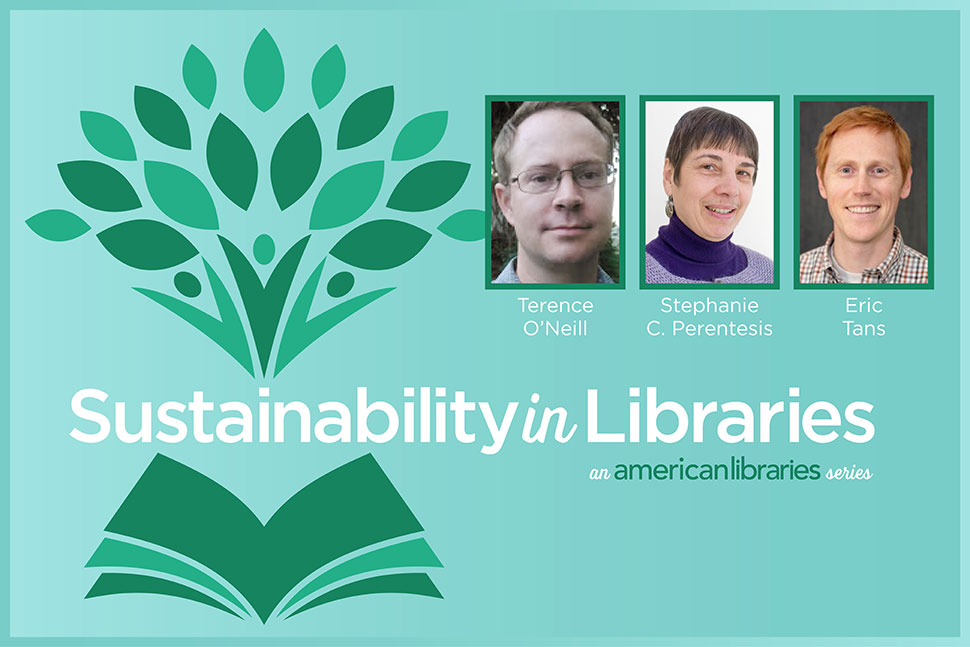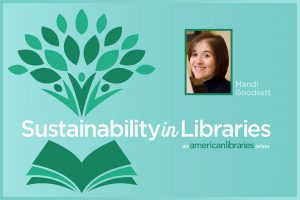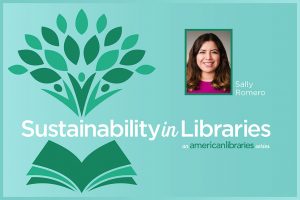
To mark the 50th anniversary of Earth Day—and recognize the American Library Association adding sustainability as a core value—American Libraries returns with its ongoing sustainability series. In these posts, information professionals share their experiences with sustainability in libraries.
Want to establish sustainability programming for your library, but wonder where to start? We developed the Sustainability Canvas, a simple planning tool for designing green projects, and have used it successfully in Michigan State University’s (MSU) Main Library in East Lansing.
The Sustainability Canvas is adapted from the Business Model Canvas (BMC), the one-sheet graphic organizer found in Alexander Osterwalder and Yves Pigneur’s popular entrepreneurship text Business Model Generation: A Handbook for Visionaries, Game Changers, and Challengers (Wiley and Sons, 2010). The BMC provides a way to view the essentials of a business idea all at once, encouraging coherence across early planning and providing a low-commitment method for potential entrepreneurs to capture key components of an idea.
The BMC has been repurposed and remixed to serve a variety of functions and users under its Creative Commons Share-Alike 3.0 License. Our Sustainability Canvas adapts the BMC’s basic format for library projects.
In early 2020, MSU Library established a seed library. To start the process, we used the Sustainability Canvas to identify potential partners, participants, and success metrics. Although it is a simple grid made up of four elements, it focused our thinking and grew our idea into a successful proposal.
What follows is a description of its main components, with an example of how we applied it.
Sustainability proposal
This is the key idea—the core of the pitch you’ll make to others. A simple phrase can get your project started and the ideas flowing. For each canvas you create, focus on one sustainability proposal. Say, like us, you want to start a seed library. What features in this proposal will work for your target participants? What value can you provide? Remember, you can revisit and refine this proposal as your planning progresses.
Target participants
What audience do you need to ensure the long-term success of this program? What language sums up their characteristics? For the seed library, we used “gardening-interested MSU affiliates.” A job title, a geographic area, or similar label can define participants’ relationship to the potential project. Consider what matters most to your target group. How will your proposal provide value in ways they care about? You might find yourself returning to this section and updating it as you learn more.
Key partners
These are the individuals and organizations you will rely on to help execute your idea. Examples include administrators, funding organizations, and—often for library programs—the sustainability office of your municipality or parent body. Who needs to approve your initiative? Whose venues and systems will you operate in? What vendors will you work with? For our project, we listed the East Lansing Public Library’s seed library, a local food bank, the university administration, the MSU Student Organic Farm, the W. J. Beal Botanical Garden, and MSU library staffers who might be affected.
Metrics of success
What will you measure to evaluate your outcomes? The number of people engaged? Material used? Money saved? We chose the number of seed packets circulated as the key metric. Other data points used to measure success were potential contacts acquired and subsequent engagement with them.
Application and iteration
One attribute of planning is that it encourages you to get ideas down and test them before getting too attached. Drafting a Sustainability Canvas is fairly painless, which means you can generate multiple versions and select the one with the most merit. You can also iterate on your canvas quickly. Did you learn more details? Write a new canvas and update the entire model to adjust to new information.
In workshops we’ve conducted that highlight our own applications, we found the BMC and Sustainability Canvas tools useful for several reasons:
- They increase clarity of project goals.
- They help focus a project idea on who it affects and who needs to support it.
- Most important, they help planners sort out their thoughts.
The Sustainability Canvas is a simple tool to start your planning, so we hope you’ll consider using it. Together we can make our libraries a little greener.



